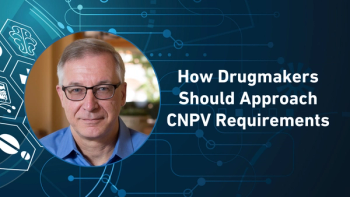
- Pharmaceutical Commerce - November/December 2016
Pharma seeks growth in eyecare
New industry entrants aim at expanding patient volumes even while drug compounding limits some therapy classes
Relative to other disease states, like cancer, diabetes or cardiovascular, ophthalmology is both smaller and less contentious. A relatively small number of pharma companies have significant franchises in it, namely, Allergan, Alcon (a subsidiary of Novartis) and Bausch + Lomb (a subsidiary of Valeant). With overall drug expenditures in the US of around $20 billion, the field doesn’t light up the radar screens of many payers looking for ways to clamp down spending.
Ophthalmologists admit few patients to hospitals, and their surgeries lack the high technical and facility fees hospital administrators seek in full-time employees. Nor has the specialty shown much interest in healthcare reform pursuits, such as transitioning to value-based reimbursement or joining accountable care organizations. The result is a workforce whose worldview remains pretty much unchanged since the 20th century: independent; prone to DIY clinical solutions; and, with less outside review, quick to embrace innovation.
However, the times are changing. A relative shortage of ophthalmologists (there are about 18,000) has led to “co-management” with optometry practices; optometrists (depending on state regulations) write nearly as many prescriptions as their physician colleagues. (1). Everyone is getting busier as the US population ages; eyecare expenditures for the over-65 demographic are nearly nine times as high for younger demographics. Meanwhile, a wider array of eyecare conditions—many of them qualifying as rare diseases—are now targets of drug development. One company—Shire Pharma—is gearing up to be a major player in the field; another is Akorn Pharma, which added three branded ophthalmic products from Merck to its portfolio in 2013. Growth rates of 5%/year are being predicted for the category.
Yet one more factor differentiates the field, and one that constrains some pharma industry growth: the widespread use of compounded pharmaceutical products. Ophthalmologists are, in fact, one of the leading medical professions supporting wider access to compounded products.
Enter newcomer Shire Pharmaceuticals (Dublin, Ireland), with bold plans to compete at almost every level of prescription ophthalmic drug therapy, and hopes to revitalize an entire industry. “There are really only a few companies that have a major presence in this space, so I think that has really, from a standpoint of Shire as a new entrant into the space, allowed us very quickly to build up our awareness and make some significant inroads,” Robert Dempsey, head of Shire’s Ophthalmic Products business unit, tells Pharmaceutical Commerce.
Shire’s portfolio consists of rare disease and specialty pharmaceuticals, mostly in gastrointestinal, internal medicine and neuroscience spaces—but until recently no eyecare drugs. When Flemming Ornskov became CEO in 2013, he knew from his years as an executive at Bausch + Lomb that the sector contained a great deal of patient need. He also knew much of that need took the form of rare diseases. For example, the retinal pigment epithelium alone can be the site of more than 200 rare maladies, most of them incurable. It seemed a perfect fit for Shire. Within a year, he had appointed Allergan veteran Robert Dempsey to head up the newly created Ophthalmic Business Unit.
Since then, the company has been laying groundwork, cooperating with professional organizations, sponsoring medical education and grants, working with key opinion leaders, and making a strong commitment to ophthalmic R&D. By the end of 2016, Dempsey estimates that Shire will have spent about $850 million on the ophthalmology move, even before launching a single drug.
This summer, the company received its first ophthalmic FDA approval, for Xiidra (lifitegrast), a dry eye drug. The launch of Xiidra will be closely watched, as it challenges Allergan’s dry eye blockbuster Restasis (cyclosporine), which generated $1.3 billion last year. There are an estimated 16 million dry eye patients in the US, many undiagnosed. The potential market might be big enough to allow Xiidra to achieve blockbuster status without encroaching much on Allergan’s market share, some forecasters believe.
In addition, Shire has investigational products for other conditions in various stages of development, including glaucoma, retinal disorders and infectious conjunctivitis (pink eye). Promotional materials indicate the company hopes to target “the anterior and posterior segments and rare ophthalmic diseases,” or, in other words, pretty much everything ocular.
Taking a page from Allergan’s Restasis launch strategy, Shire is planning a comprehensive direct-to-consumer advertising campaign. It recently signed Jennifer Aniston as a celebrity endorser. Few remember it now, but Restasis was not an instant success when it launched in 2002. Former Allergan employee Denise Sheehan, who now serves as the global marketing lead for retina at Santen, recalls that “it was not until after Allergan made some strategic investments in direct-to-consumer advertising, also with a celebrity endorser, that the brand really took off.”
Achilles’ heelThe consumer choice element in dry eye is unusual for ophthalmology, which tends to be dominated by specialty drugs marketed to physicians. Currently, the most dynamic area here has been in the retinal field, driven by the success of anti-VEGF therapies. (Anti-vascular endothelial growth factor is a component of treating eye conditions as well as reducing tumor growth in cancer.) Anti-VEGF therapies effectively treat a number of serious, vision-threatening retinal conditions, including age-related macular degeneration (AMD), diabetic macular edema (DME), and central retinal vein occlusion (CRVO) among others.
Developed by Genentech (San Francisco, CA), the first highly successful agent, Lucentis (ranibizumab), arrived in 2006 (Fig. 1). Before that, however, ophthalmologists got wind of the promising trials and began using a similar Genentech product purchased through compounding pharmacies, Avastin (bevacizumab), off-label (Fig. 2). Avastin produced similarly positive outcomes and costs only $50 per dose, compared to more than $1,000 for Lucentis. When the company took steps to limit Avastin’s availability to compounding pharmacies, ophthalmologists cried foul. Eventually, the company backed down, but the lingering animus within the profession actually resulted in the heightened popularity of the off-label option, many observers say.
To this day, despite the addition of Eylea (aflibercept) by Regeneron Pharma in 2011, Avastin remains a staple among retinal surgeons, who may use it when other options fail or in cases of financial need. Occasionally an insurance plan will require Avastin as a first-line therapy, but for the most part, prescribing decisions have been left to clinicians. One reason is Avastin’s off-label status for eyecare. “While compounded Avastin is lower cost, it does require manipulation of an injectable product which will ultimately be injected into the patient’s eye,” explains Andy Behm, VP of clinical evaluation and policy at the pharmacy benefit manager Express Scripts. “It’s challenging to mandate if the prescribing physician is uncomfortable with the product or the dispensing pharmacist has little to no experience in compounding it.”
Even so, if the profession has a financial Achilles’ heel, injectable retina drugs are it. Experts believe some form of cost curtailment could emerge from CMS rather than private payers since Medicare covers most anti-VEGF patients. “Last year Medicare Part B spent $8.4 billion on claims by ophthalmologists,” notes Kevin Corcoran, COE, a consultant in San Bernardino, CA. “Of that amount, $2.7 billion was supplies, and almost all of that money was spent on just two items: Lucentis and Eylea. So in other words, 32% of all the money ophthalmology received from Medicare was for just two drugs. And that number keeps rising every year.” In the long run, he concludes, such numbers are unsustainable.
DIY antibioticsEconomists blame a small market and increased competition for recent shortages and price hikes among generic drugs. A few examples: Acetazolamide, an oral glaucoma drug, which once sold for less than $50 for a bottle of 100 pills, now costs $350. Carbachol, a drop used for glaucoma and certain eye surgeries, is no longer available. Echothiophate powder, used to create glaucoma drops, is no longer available except at exorbitant prices. (2)
Clinicians express particular ire for what happened to phenylephrine hydrochloride, a topical pupil dilator used for many decades during cataract surgery. In 2013, because of a paperwork glitch (the 70-plus-year-old generic did not have a National Drug Code number), it gained approval from the FDA as a “new” drug. Within four months, all three other makers of phenylephrine withdrew from the market. Now Bausch + Lomb sells for $115 per bottle what once cost $15.
Another area of concern is the rising cost of branded antibiotic drops prescribed to cataract patients post-surgically to prevent infection. In a professional organization’s trade journal, prominent cataract surgeon Eric Donnenfeld, MD, wrote: “Today, my patients are outraged at the cost of cataract surgery medications, and my staff is considering mutiny after fielding dozens of calls a week to resolve medication cost and insurance approval issues.” (3)
Allergan, Alcon and Bausch + Lomb have introduced coupon systems that reduce copays, but this can also be a hassle, writes Donnenfeld: “This [coupon] system has to become more seamless as my staff and I want to do what is best for patients, but do not want to be handing out coupons all day.”
As a result, ophthalmologists are increasingly opting to inject the drugs during the surgery itself. Intracameral antibiotics have been around since the 1990s—about 20% of surgeons use them today—but when reports began to surface of patients avoiding cataract surgery for financial reasons, they gained popularity. Unfortunately, no FDA-approved products exist for this purpose. Thus some surgeons are turning to compounding pharmacies to create customized, off-label injectable products. For example, the compounding pharmacy Imprimis (San Diego, CA) offers an injectable agent called TriMoxi, which combines triamcinolone and moxifloxacin.
Access to drugsBecause ophthalmologists rely heavily on products created by compounding pharmacies, keen interest surrounds the Drug Quality and Security Act of 2013, which re-regulated the industry after NECC compounding scandal, in which allegedly contaminated, compounded steroids caused dozens of deaths and injuries. FDA has released multiple guidance documents aimed at clarifying the law, but gray areas persist.
Over the summer, in Congressional testimony regarding the latest draft guidance document, Nancey McCann, director of government relations for the American Society of Cataract and Refractive Surgery, stressed that, in addition to Avastin, clinicians need compounding pharmacies to provide fortified antibiotics for patients presenting acute corneal ulcers.
“Physicians have reported varying difficulties in obtaining compounded drugs since recent guidance has created confusion in the market among state boards of pharmacy, providers and pharmacists,” she testified. “Because these drugs are not used in practices on a regular basis, physicians generally order them in smaller quantities, which makes it less cost-effective for the outsourcing facilities to produce.” Also at issue are the proposed beyond-use dates (BUDs), which, at only five days, remain too short to keep drugs in stock, critics say.
“The regulations and DQSA guidance has resulted in consolidation of compounding services, most notably, driving the differentiation between a 503A and 503B facility,” according to Eric Sredzinski, PharmD, EVP of clinical quality assurance for Avella Specialty Pharmacy, which also offers compounded pharmacy services. “From our perspective, determining products to compound is a balance between practitioner demand, feasibility, and the investment required to compound. Avella’s focus has always been on quality and patient safety and we welcome continued standards with compounding, such as those positioned in DQSA,” he says.
In addition, retina specialists risk being impacted by potential Medicare reforms of the Average Sales Price (ASP) metric used for reimbursing provider administered injectable drugs. Under the so-called “buy-and-bill” drug acquisition model, CMS pays practices 6% above the sales price for these drugs, but CMS is seeking to change that formula. In March, CMS proposed a test of lowering the ASP bonus to 2.5% plus a fixed $16.80 payment in some geographical areas, but it is unclear whether this pilot study will actually move forward.
Retinal surgeons could avoid buy-and-bill altogether by obtaining drugs through specialty pharmacies like Avella—and some do—but most practices opt for the greater inventory control and profitability offered by keeping drugs in stock. However, the challenge here is that it strains the profession’s limited knowledge of this drug channel.
“For retina, buy-and-bill is still relatively new,” says Jennifer Waters, VP of sales for ophthalmology for the drug wholesaler McKesson. “It’s only been around since 2006 [the launch of anti-VEGF agents] that they have been doing it.” Hence her company makes special efforts to help practices with inventory management, regulatory updates and administrative advice: “We have a consulting arm that will partner with the practice and look at their managed care agreements, maybe help them negotiate with private payers. We have a team that will go in and do an in-practice diagnostic around their revenue cycle—how quickly they can get bills out the door and get reimbursed better—things like that.”
New modelsWithin the subtext of Shire’s marketing pitch lurks the message that ophthalmology has been ill served by its current drug manufacturers, Dempsey says, “Some of the other companies are going through some challenges in this space. We believe we are investing in research and development, while others are divesting.”
He has made similar comments in other venues, and they could be interpreted as a criticism of Bausch + Lomb, whose parent company Valeant (Laval, Canada) has a reputation for slashing R&D budgets and artificially driving growth through steep price hikes, a practice that made headlines last year. However, in the context of vision care, one Valeant endeavor does deserve scrutiny, and perhaps not in an entirely negative light.
In his final troubled days as CEO last year, Michael Pearson struck a deal with Walgreens Boots Alliance for the pharmacy chain to sell certain ophthalmic and dermatologic drugs directly from its 8,000 US locations on a consignment basis, skipping over wholesalers. Valeant paid the pharmacy a dispensing fee regardless of whether insurance covered the drug.
For Valeant, the arrangement proved disastrous. It footed the bill for the 25% of prescriptions that payers refused to cover and saw its eye-drug sales plunge 30% in the first quarter of this year. The company’s new CEO is trying to extract the drug maker from the deal.
But where some see this as a cautionary tale, others see a potentially successful new idea poorly executed. “It’s a shame to think of this as a failure, because I do think a model like this could work,” says Kathleen Iacocca, PhD, an assistant professor at Villanova University School of Business, who has studied drug supply chains. “The issue was the insured. The company took a leap of faith without checking to make sure if insurance would actually pay. But imagine if a manufacturer could partner with a third party where pre-authorization could take place. That model would be groundbreaking.”
Iacocca added that because of its high-profit margins and relative lack of generic competition, a small specialty like eyecare would be an ideal space to test such a model.
The bigger picture points to steady growth in eyecare, if only for demographic trends. “Almost everybody, if they have enough birthdays, is going to need to see an ophthalmologist,” notes consultant John B. Pinto, president of J. Pinto and Associates in San Diego, CA. “It’s not like an oncologist or a podiatrist where only a fraction of the nation has a relationship with you. Almost everybody gets to take a turn at the ophthalmology dial.”
References:
- Gonzales AL, et al. A survey of optometrists’ ophthalmic medication prescribing. Clinical Optometry. March 2014;Vol. 6:11-15. Retrieved: https://www.dovepress.com/a-survey-of-optometrists39-ophthalmic-medication-prescribing-peer-reviewed-fulltext-article-OPTO
- Roach L. (January 2015) “The State of Generic Drugs,” EyeNet Magazine. Retrieved: http://www.aao.org/eyenet/article/state-of-generic-drugs
- Donnenfeld E. (March 2016) “The Eye-Q Test,” EyeWorld Magazine. Retrieved: http://www.eyeworld.org/article-the-eye-q-test
Save
Save
Articles in this issue
almost 9 years ago
Pharma Serialization: First Experience, Best Practices, Future Directionabout 9 years ago
The medical crisis that didn’t happenabout 9 years ago
A conversation with Jim Mullen, Patheonabout 9 years ago
Active packaging protects oral solid formulationsabout 9 years ago
ATCC broadens its resources for cell lines to research cancerabout 9 years ago
A new approach to pharma supply-chain collaborationabout 9 years ago
Pharma traceability: year in reviewabout 9 years ago
Putting drug administration in patient’s handsabout 9 years ago
Targeting the gatekeepers in long term careNewsletter
Stay ahead in the life sciences industry with Pharmaceutical Commerce, the latest news, trends, and strategies in drug distribution, commercialization, and market access.





